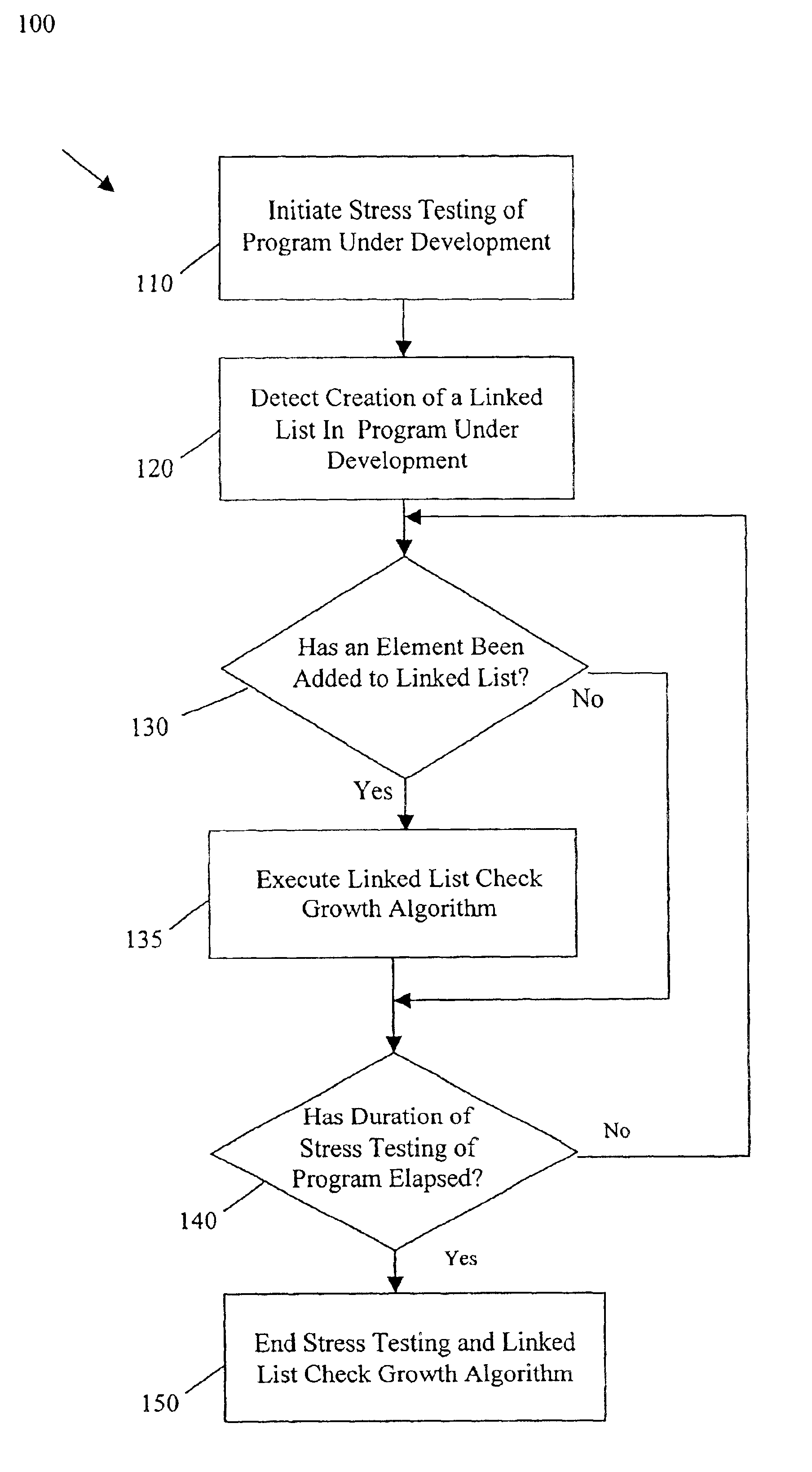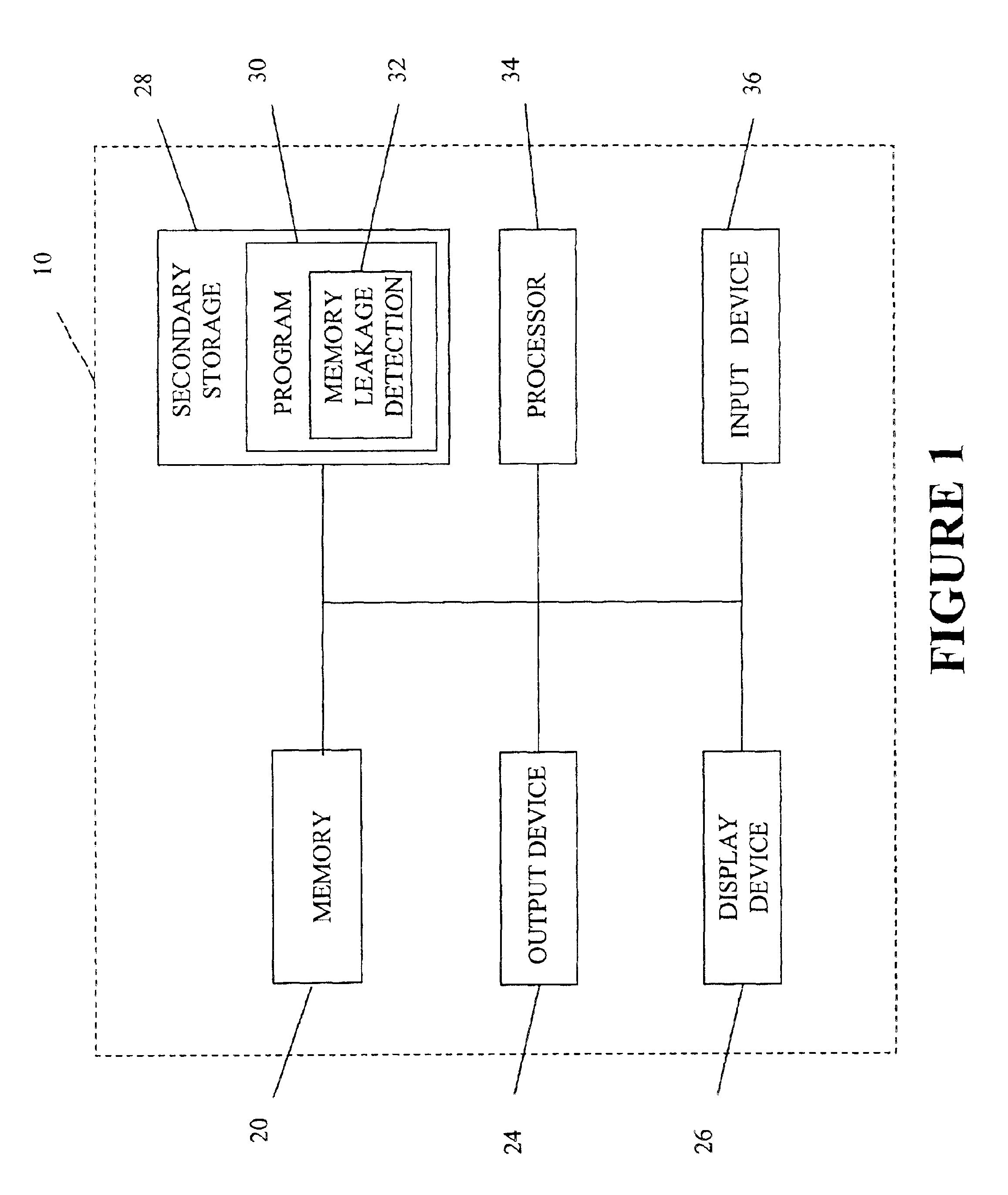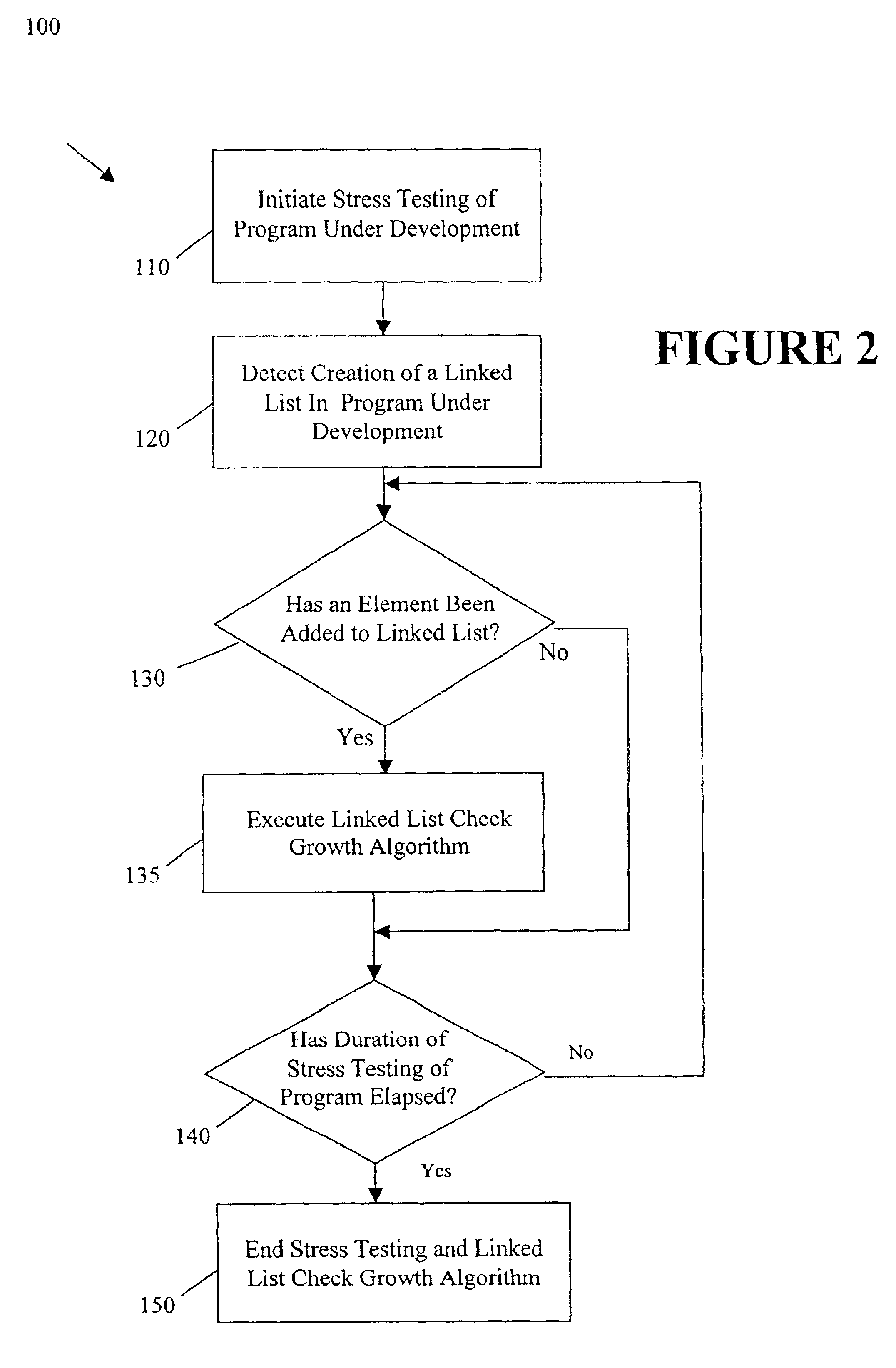Method to detect unbounded growth of linked lists in a running application
a running program and linked list technology, applied in the field of troubleshooting program code, can solve problems such as memory leakage, memory leakage, and never free up the reserved piece of memory
- Summary
- Abstract
- Description
- Claims
- Application Information
AI Technical Summary
Benefits of technology
Problems solved by technology
Method used
Image
Examples
Embodiment Construction
[0017]FIG. 1 is a block diagram illustrating a preferred embodiment of a computer system 10 upon which the method described herein may be implemented. Computer system 10 typically includes a memory 20, an output device 24, a display device 26, a secondary storage device 28, a processor 34, and an input device 36. Memory 20 may include random access memory (RAM) or similar types of memory. Secondary storage device 28 may include a hard disk drive, floppy disk drive, CD-ROM drive, or other types of non-volatile data storage. Secondary storage device 28 may also store one or more program(s) 30, which may be under development, and which preferably incorporate modules containing instructions for memory leakage detection 32, according to the method described herein. Alternatively, the program(s) 30 and the modules for memory leakage detection 32 may be stored in memory 20.
[0018]Processor 34 executes a program selected from the program(s) 30 and the modules 32 stored in memory 20 or second...
PUM
 Login to View More
Login to View More Abstract
Description
Claims
Application Information
 Login to View More
Login to View More - R&D
- Intellectual Property
- Life Sciences
- Materials
- Tech Scout
- Unparalleled Data Quality
- Higher Quality Content
- 60% Fewer Hallucinations
Browse by: Latest US Patents, China's latest patents, Technical Efficacy Thesaurus, Application Domain, Technology Topic, Popular Technical Reports.
© 2025 PatSnap. All rights reserved.Legal|Privacy policy|Modern Slavery Act Transparency Statement|Sitemap|About US| Contact US: help@patsnap.com



